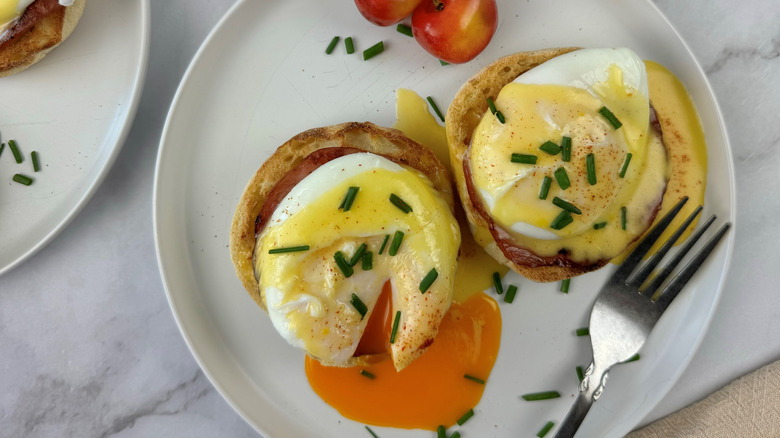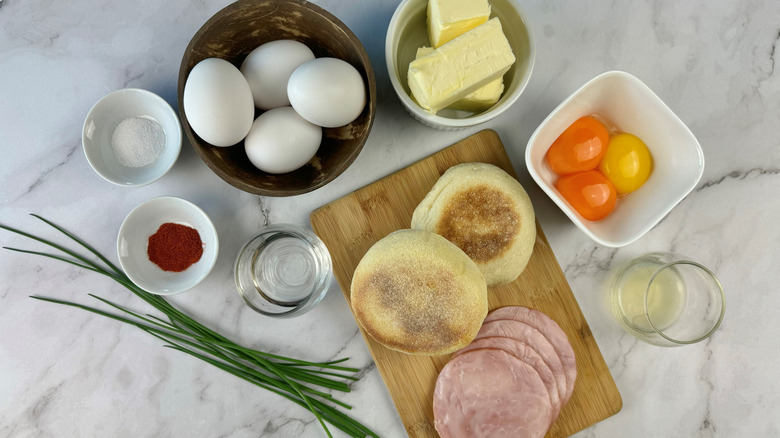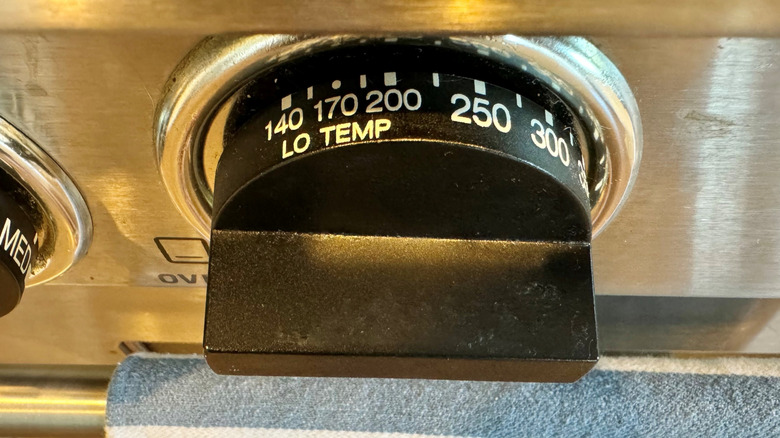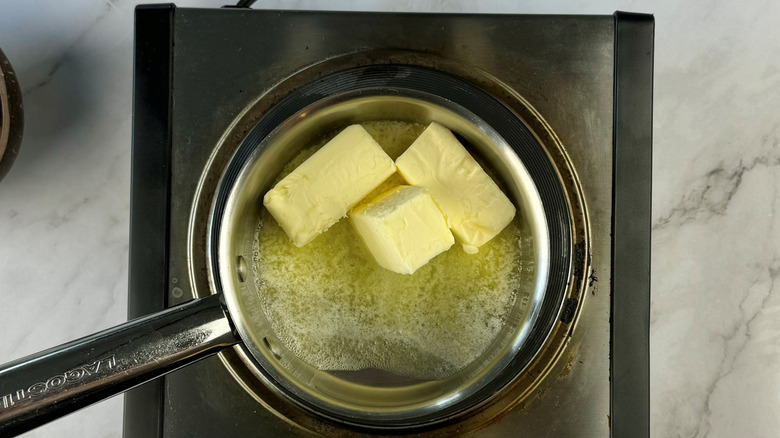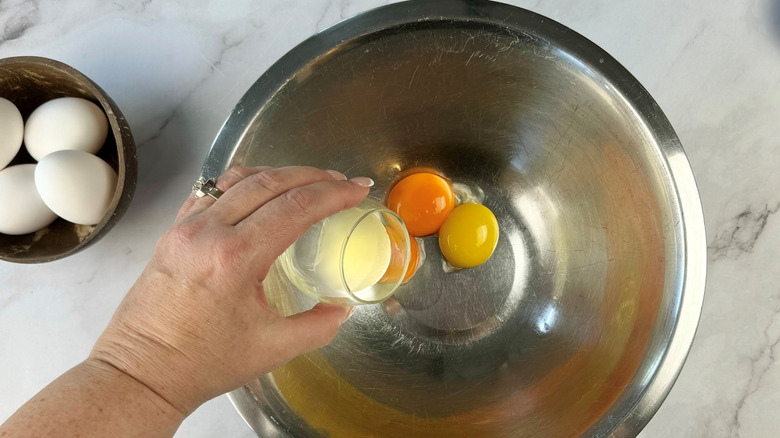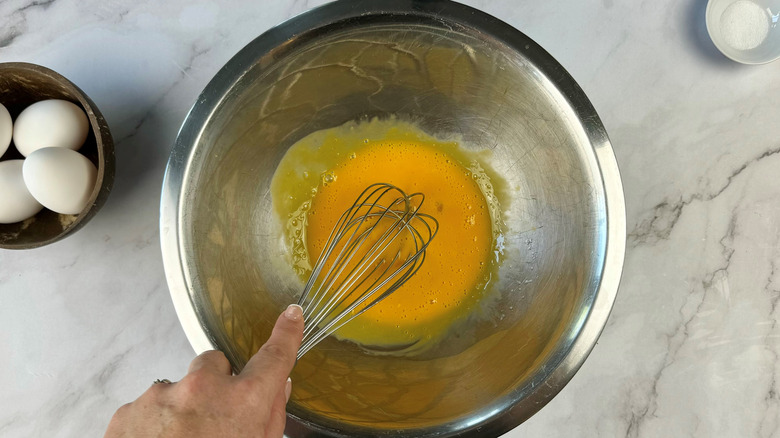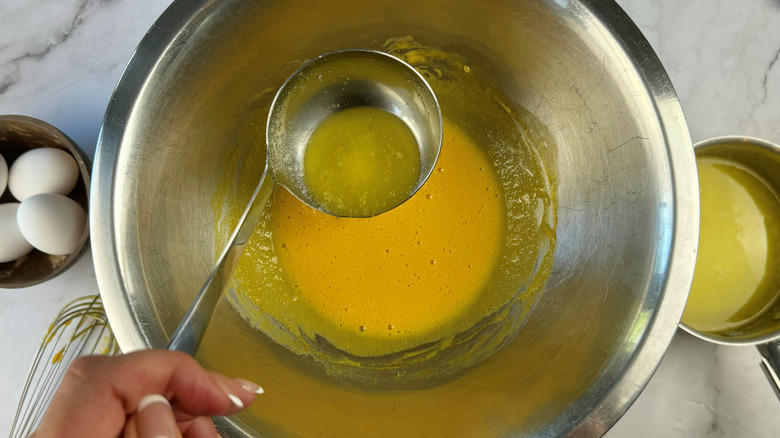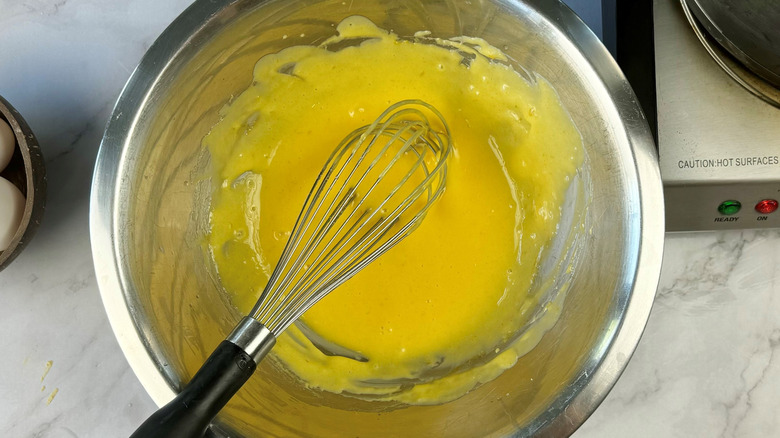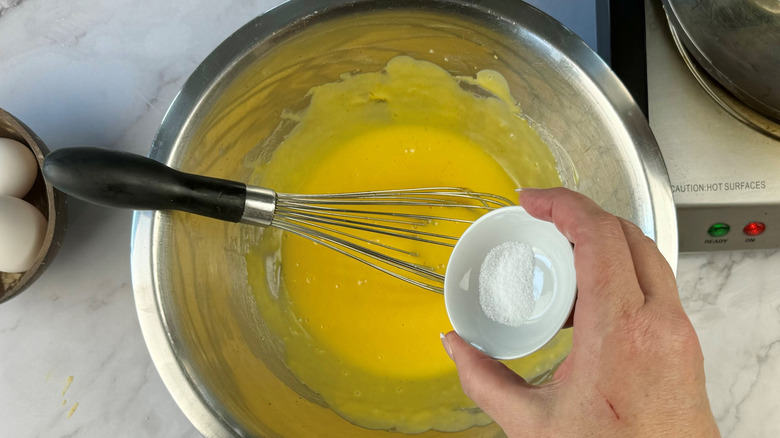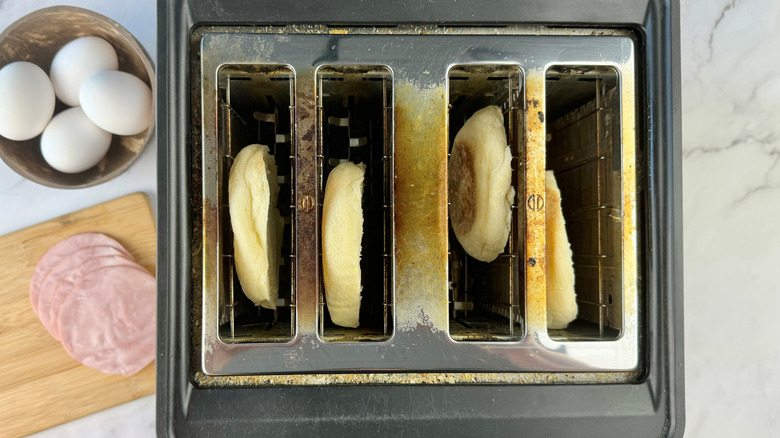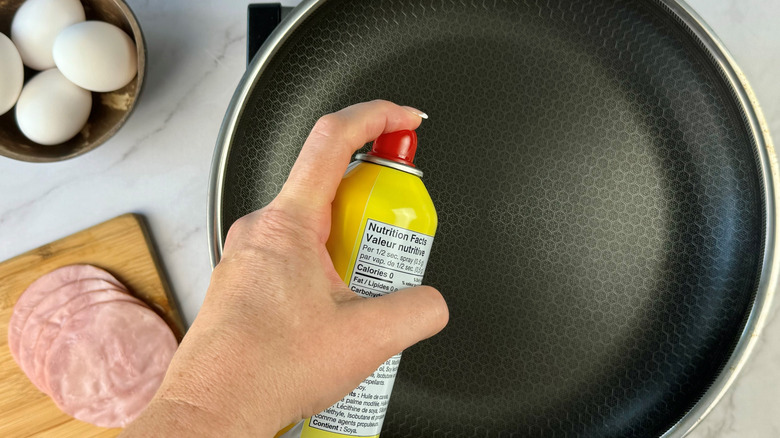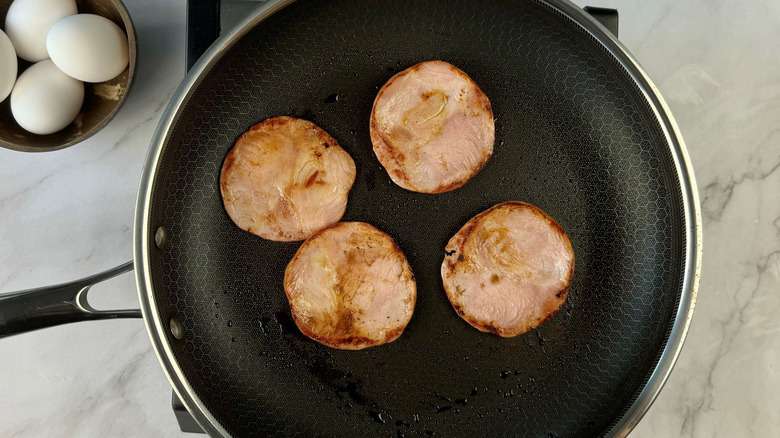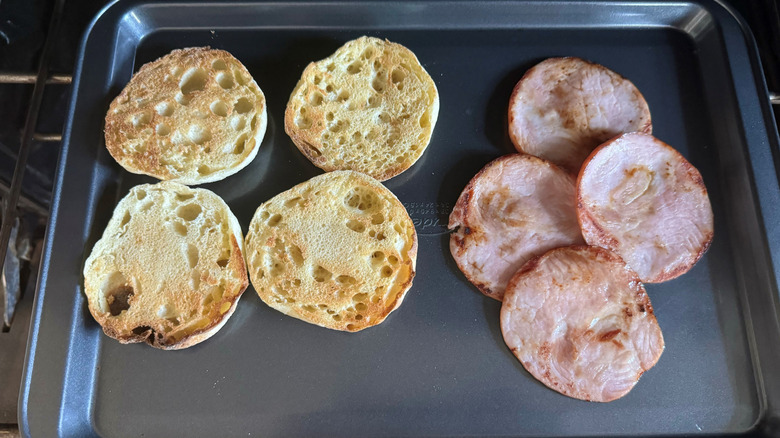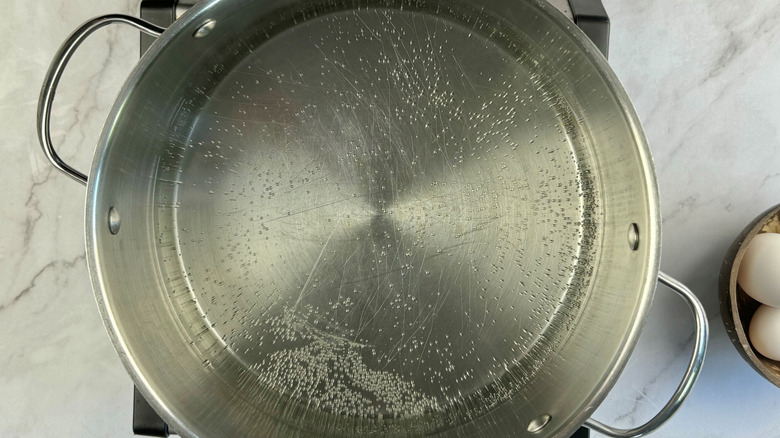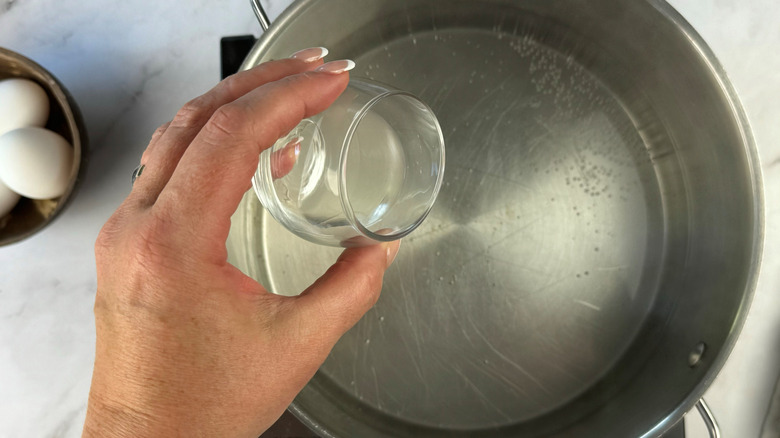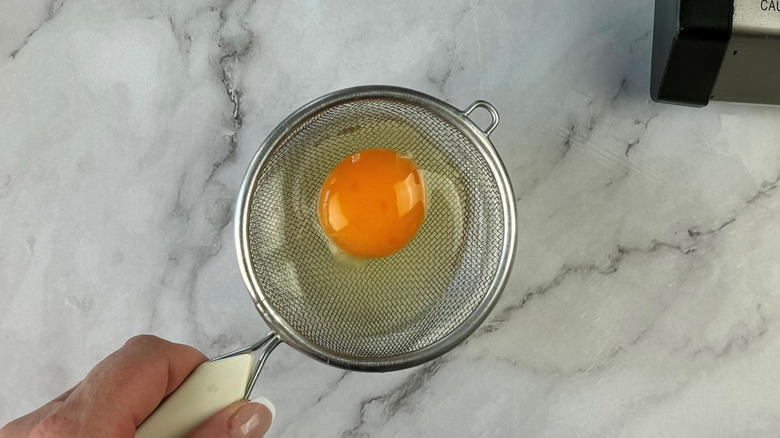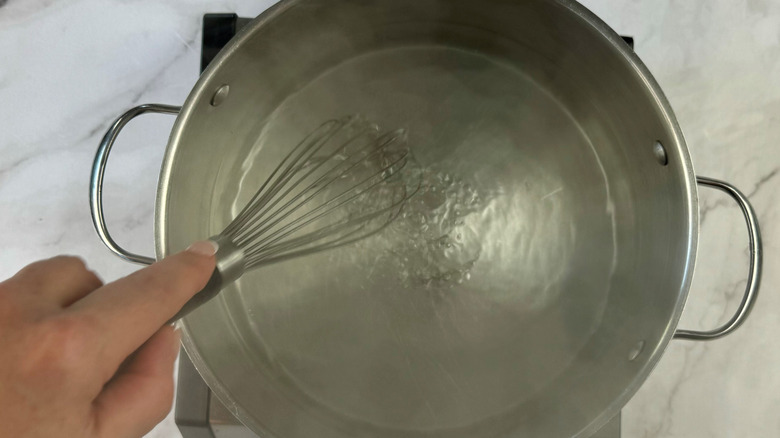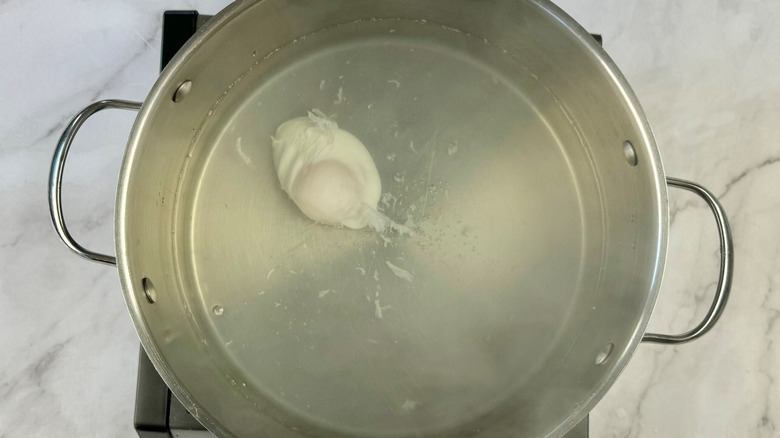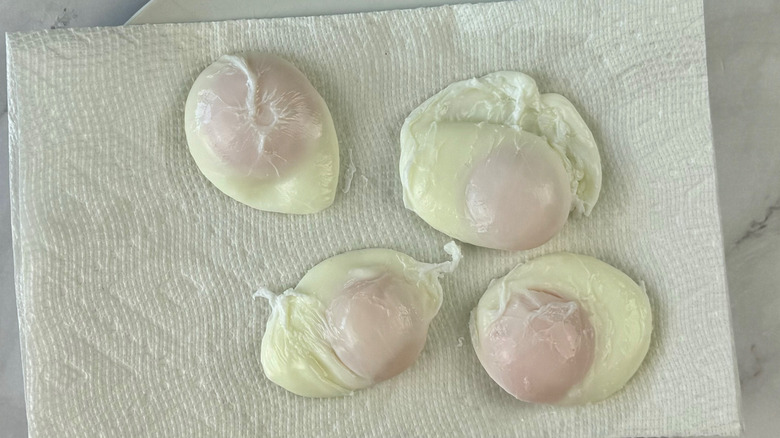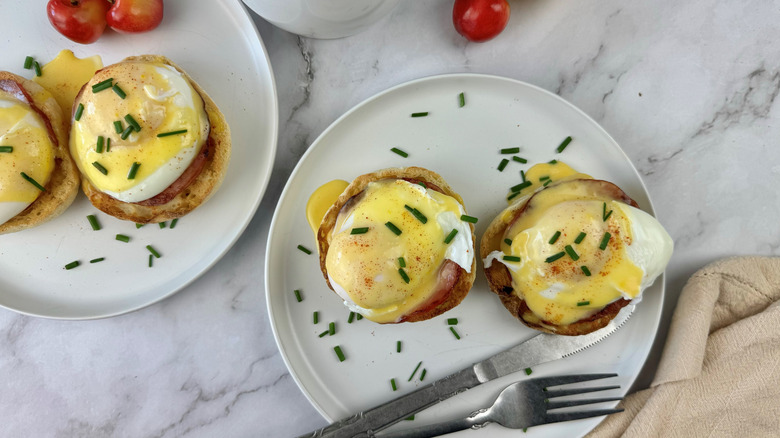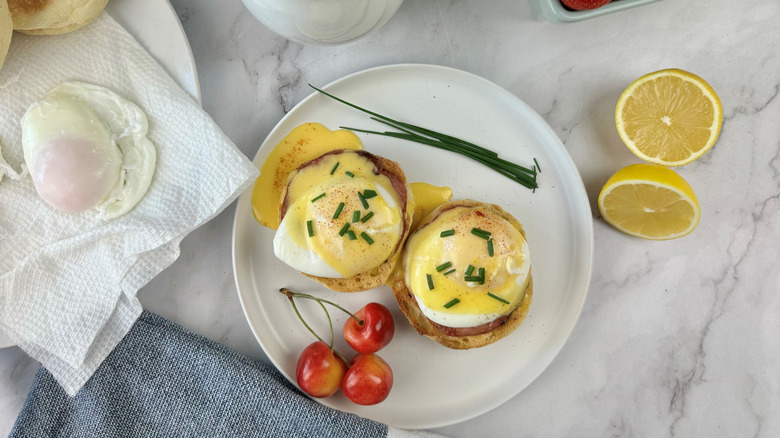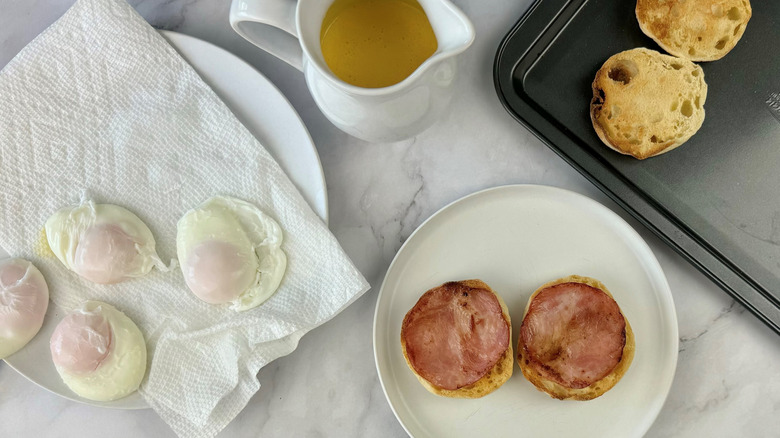Classic Eggs Benedict Recipe
Few meals are as comforting as a classic eggs Benny. The dish has a contested history, with many believing that it was first developed in the mid-to late-1800s by a chef at Delmonico's Restaurant in New York City. "According to legend, one regular diner by the name of Mrs. LeGrand Benedict grew tired of the menu and requested something new, and the chef created this dish for her." Recipe developer Julianne De Witt brings us this recipe that's as classic as the dish itself. She calls this a "decadent meal, with perfectly poached eggs on a toasted English muffin topped with Canadian bacon and a velvety buttery sauce with a hint of lemon." De Witt suggests serving eggs Benedict with fruit or hash browns, as well as a mimosa to wash it all down. That's a meal worth waking up for!
While it might be your go-to order at the local brunch spot, there's no reason not to master the recipe to whip up at home. Poaching eggs is an intimidating process for some, but De Witt offers a novel technique that makes it more foolproof than you'd think. Hollandaise, another key aspect of the recipe, is a versatile French sauce. As De Witt explains, "It is one of the five mother sauces of classical cuisine and one of the first sauces I learned to make in culinary school." If you have any hollandaise left over, she recommends trying it with roasted asparagus, steak, or lobster.
Gather the ingredients for classic eggs Benedict
For the hollandaise sauce, you'll need butter, egg yolks, lemon juice, and sea salt. De Witt uses salted butter and notes that you may want to add a bit more if you use unsalted butter. Next, split some English muffins in half and get cooking spray, Canadian bacon slices, white vinegar, and eggs. To garnish, get paprika and minced chives.
Step 1: Preheat the oven
Preheat the oven to 200 F.
Step 2: Melt the butter
Melt the butter in a small saucepan over low heat.
Step 3: Combine the yolks and lemon
Add the egg yolks and lemon juice to a medium-sized metal bowl.
Step 4: Whisk the yolks
Whisk the egg yolks and lemon juice together.
Step 5: Whisk over a double boiler
Place the bowl over a saucepan containing 2 inches of simmering water (the water should not touch the bottom of the bowl). Whisk rapidly.
Step 6: Add the butter
Slowly drizzle in the melted butter and continue whisking until the sauce has thickened.
Step 7: Add salt
Remove from the heat and whisk in the salt. Keep the hollandaise warm.
Step 8: Toast the muffins
Lightly toast the English muffins.
Step 9: Grease and heat a pan
Spray a frying pan with cooking spray and place over medium heat.
Step 10: Brown the bacon
Brown the bacon lightly on both sides, approximately 30 seconds a side.
Step 11: Keep the muffins and bacon warm
Place the muffins and bacon on a cookie sheet and place in the oven to keep warm.
Step 12: Heat water in a pot
Fill a large pot half full of water and bring to a slow boil then reduce to a light simmer.
Step 13: Add the vinegar
Add the white vinegar to the water.
Step 14: Strain an egg
Break 1 of the eggs into a strainer over a bowl and gently shake out the loose egg white.
Step 15: Swirl the water
Swirl the water with a whisk.
Step 16: Drop an egg into the water
Carefully drop the egg into the center of the pot and cook the egg for 3 minutes or until the egg white has set and the yolk remains soft.
Step 17: Finish cooking the eggs
Remove the egg with a slotted spoon and drain on a towel-lined plate. Repeat the last two steps with the remaining eggs.
Step 18: Assemble and serve
To assemble, place the English muffin on a plate, lay a slice of bacon on top, and add a poached egg and a generous amount of hollandaise sauce. Garnish with a touch of paprika and chives.
Classic Eggs Benedict Recipe
This recipe for eggs Benedict is as classic as the dish itself, and provides some special hacks for making foolproof poached eggs and hollandaise sauce.
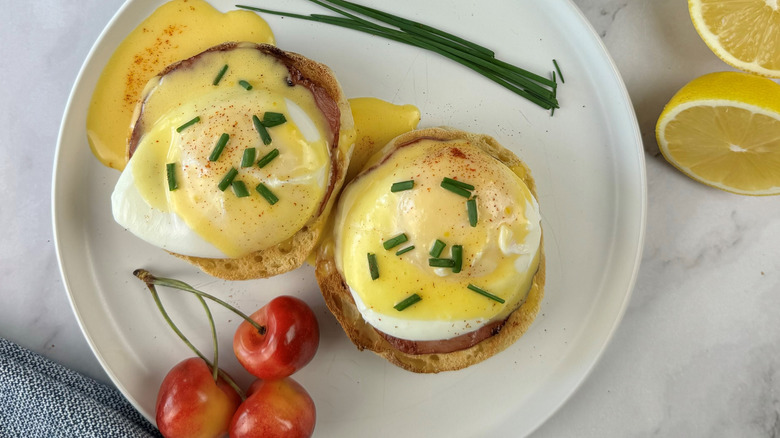
Ingredients
- For the Hollandaise Sauce
- ¾ cup butter
- 3 egg yolks
- 1 tablespoon lemon juice
- ¼ teaspoon sea salt
- For the Eggs Benedict
- 2 English muffins, split in half
- Cooking spray
- 4 slices Canadian bacon
- 1 tablespoon white vinegar
- 4 eggs
- For the Garnish
- Pinch of paprika
- 1 tablespoon minced chives
Directions
- Preheat the oven to 200 F.
- Melt the butter in a small saucepan over low heat.
- Add the egg yolks and lemon juice to a medium-sized metal bowl.
- Whisk the egg yolks and lemon juice together.
- Place the bowl over a saucepan containing 2 inches of simmering water (the water should not touch the bottom of the bowl). Whisk rapidly.
- Slowly drizzle in the melted butter and continue whisking until the sauce has thickened
- Remove from heat and whisk in the salt. Keep warm.
- Lightly toast the English muffins.
- Spray a frying pan with cooking spray and place over medium heat.
- Brown the bacon lightly on both sides, approximately 30 seconds a side.
- Place the muffins and bacon on a cookie sheet and place in the oven to keep warm.
- Fill a large pot half full of water and bring to a slow boil then reduce to a light simmer.
- Add the white vinegar to the water.
- Break 1 of the eggs into a strainer over a bowl and gently shake out the loose egg white.
- Swirl the water with a whisk.
- Carefully drop the egg into the center of the pot and cook the egg for 3 minutes or until the egg white has set and the yolk remains soft.
- Remove the egg with a slotted spoon and drain on a towel-lined plate. Repeat the last two steps with the remaining eggs.
- To assemble, place the English muffin on a plate, lay a slice of bacon on top, add a poached egg and a generous amount of hollandaise sauce. Garnish with a touch of paprika and chives.
Nutrition
| Calories per Serving | 1,027 |
| Total Fat | 88.7 g |
| Saturated Fat | 48.5 g |
| Trans Fat | 0.0 g |
| Cholesterol | 748.5 mg |
| Total Carbohydrates | 29.2 g |
| Dietary Fiber | 2.7 g |
| Total Sugars | 2.1 g |
| Sodium | 773.4 mg |
| Protein | 31.4 g |
What are some tips to ensure perfect hollandaise?
"While its origins are up for debate, most French chefs believe that Hollandaise sauce hails from France, was originally known as Sauce Isigny, and is named after a small town in Normandy famous for its butter and cream," De Witt explains. Hollandaise sauce can be tricky to make, but with a few tips, you'll be on your way to mastering this important culinary art. De Witt calls for the double boiler method, and warns, "Don't overcook the eggs. Once this happens there is no going back." She emphasizes that it's important to cook the eggs over simmering — not boiling — water. "When the yolks lighten in color, start adding the butter in increments, whisking constantly." It's important to whisk throughout the entire process to ensure the eggs cook evenly. "If it looks as though the sauce is beginning to split, add an ice cube. This can help to emulsify the sauce."
Make sure the sauce stays warm before you assemble and serve the eggs Benedict so that it doesn't congeal, "Keep the sauce warm by leaving it in the bowl on the double boiler over very low heat." If it becomes too thick, simply whisk in some water. De Witt prefers the double boiler method because it gives her more control over the sauce. Alternatively, she notes that some recipes achieve emulsification by combining the ingredients in a blender, but the sauce might not be as smooth and velvety.
What are some tips for perfect poached eggs?
Although many people don't attempt to make eggs Benedict at home because they worry they'll make mistakes while poaching the eggs, it's not as difficult as you think, and we've got a special secret method to make it even more foolproof. A traditional method for poaching eggs calls for poaching them "one at a time in simmering water with a little white vinegar, dropped in the center of the swirling water." De Witt tells us there's a better way, "For this recipe, I tried the hack of cracking the eggs into a strainer and gently shaking out the loose whites. The result was a neater, less feathery egg, and I have to say this technique is a lot easier than the traditional method."
Meanwhile, you don't have to poach each egg individually with De Witt's approach. Most recipes, including this one, instruct cooks to make a whirlpool-like swirling motion in the water to hold each egg, but De Witt doesn't think it's strictly necessary if you use another simple hack. "Cracking the egg into a ramekin first, then dropping it gently into the water will help the egg to keep its shape," she notes. Using this method, you should be able to cook 2 eggs at once and still obtain a neat and perfectly cooked result. Just be sure to maintain the water at a light simmer throughout the process.

